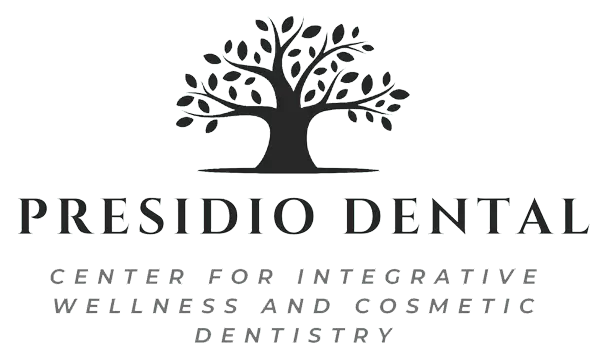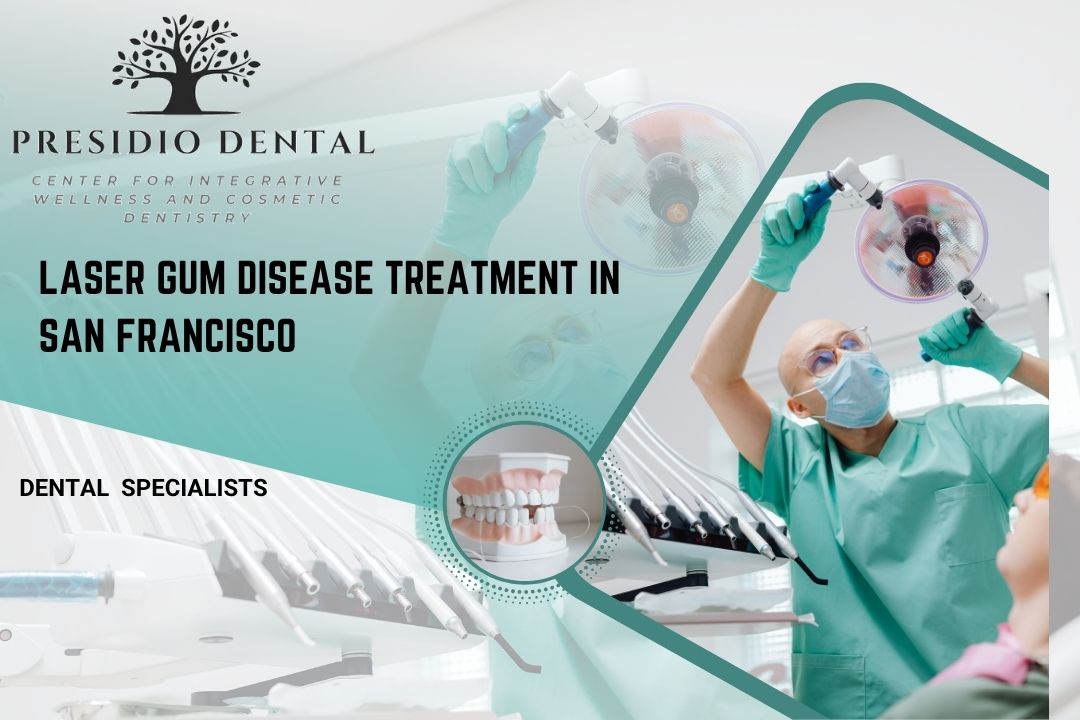If you’re dealing with bleeding gums, bad breath, or receding gums, it could be a sign of gum disease—a common but serious issue that affects your oral health. The good news? Laser treatment for gum disease is available in San Francisco and offers a minimally invasive way to manage periodontitis. These treatments offer a minimally invasive approach to managing and potentially reversing the effects of gum disease with faster recovery times compared to traditional methods.
What Is Laser Treatment for Gum Disease?
Laser gum therapy uses targeted light energy to remove inflamed or infected gum tissue around the teeth. The most common method, known as LANAP (Laser-Assisted New Attachment Procedure), gently eliminates bacteria and diseased tissue while preserving healthy gums.
Unlike traditional flap surgery, this treatment involves no cutting or sutures, making it an ideal choice for patients who want less pain and quicker recovery.
Why Choose Laser Gum Therapy?
Traditional gum surgery (known as flap surgery) involves cutting the gums to access and clean the roots of teeth, followed by suturing. While effective, this method can be uncomfortable and often requires extended healing time.
Laser therapy is changing that. Benefits of laser gum treatment include:
- Minimally Invasive – No scalpels, no stitches. Laser treatment is far gentler on your mouth and causes significantly less trauma.
- Faster Healing – Most patients return to normal activities within a day or two. Healing is quicker because there’s less inflammation and tissue damage.
- Less Pain & Bleeding – The laser seals blood vessels and nerve endings as it works, which means minimal bleeding and post-op discomfort.
- Preserves Healthy Tissue – Laser therapy targets only the diseased areas, protecting your natural gum structure.
- Clinically Proven Results – LANAP has been shown to reduce gum pocket depth, destroy harmful bacteria, and encourage bone regeneration.
Laser therapy not only helps stop gum disease but can also encourage regeneration of bone and tissue, helping to stabilize teeth and improve overall oral health.
Who Is a Candidate for Laser Gum Treatment?
Gum disease isn’t always obvious in its early stages. However, if you’re experiencing any of the following symptoms, it’s important to see a periodontist or laser-certified dentist:
- Bleeding while brushing or flossing
- Red, swollen, or tender gums
- Persistent bad breath or bad taste
- Gum recession (teeth appear “long”)
- Loose or shifting teeth
- Deep pockets between teeth and gums
- Previous diagnosis of gingivitis or periodontitis
If you’ve been told you need gum surgery, ask your periodontist if laser treatment is an option for you.
What Happens During the Procedure?
Most people have the procedure done at the dentist’s office, and it usually takes one or two visits—depending on how serious the problem is.
Here’s what happens:
1. Consultation & Imaging – Your provider will conduct a detailed exam, take X-rays or 3D scans, and determine the extent of your gum disease.
2. Laser Cleaning & Treatment – A thin laser fiber (about the thickness of three hairs) is inserted into the gum pocket to remove infected tissue and kill bacteria.
3. Root Surface Debridement – The roots of the teeth are thoroughly cleaned to remove tartar and allow for reattachment.
4. Natural Healing & Reattachment – The laser helps seal the pocket, allowing your gums to naturally reattach to the tooth roots.
5. Recovery – Most patients can eat soft foods the same day and resume normal activity in 24–48 hours.
No cutting, no stitches, and minimal bleeding. Recovery is significantly easier than with traditional gum surgery.
Cost of Laser Gum Disease Treatment in San Francisco
The price of laser periodontal treatment depends on how advanced your gum disease is and how many areas need to be treated.
Average Cost Breakdown:
- Single Quadrant: $300 – $700
- Full Mouth (4 Quadrants): $2,000 – $6,000
Insurance & Financing Options:
- Some dental insurance plans may cover a portion of LANAP if it’s medically necessary.
- Many San Francisco dental clinics offer payment plans, CareCredit, or in-house financing to help make treatment more affordable.
How to Choose the Right Laser Dentist or Periodontist in San Francisco
Choosing a qualified provider is essential to getting the best results from your treatment. When selecting a provider, look for:
- 🔹 Board-certified periodontists or laser-certified dentists
- 🔹 Experience performing LANAP or similar procedures
- 🔹 Use of FDA-approved laser technology
- 🔹 Transparent cost estimates and patient education
Top-rated practices in San Francisco often provide 3D imaging, sedation options, and post-treatment support for better results and comfort. Presidio Dentist Clinic in San Francisco also offer sedation options, same-day digital imaging, and personalized aftercare.
📍 Laser Gum Treatment in San Francisco: PRESIDIO DENTAL
You don’t have to live with the discomfort, embarrassment, or health risks of gum disease. With laser therapy, you now have a comfortable, cutting-edge option that delivers real results—without the pain and hassle of surgery.
Whether you’re exploring your options or ready to begin treatment, reach out to a certified San Francisco laser periodontist and take the first step toward a stronger, cleaner, and healthier smile.
Schedule a consultation today with a San Francisco laser periodontist and take the first step toward a healthier smile and body.
FAQs : Laser Gum Therapy
Is laser gum treatment painful?
Most patients experience only mild discomfort. There’s no cutting or stitching involved, which significantly reduces pain and anxiety.
How long does LANAP take?
Treatment typically takes 1–2 hours per session. Some patients need one visit; others require two.
Is laser gum therapy better than surgery?
In many cases, yes. Laser therapy is less invasive, faster to heal, and more precise in targeting diseased tissue.
How long does recovery take?
Most people return to work or daily activities within 24–48 hours. Healing continues gradually over the next few weeks.
Will insurance cover LANAP?
Coverage varies. Some plans reimburse partially if the procedure is considered medically necessary. Ask your dental provider to check your benefits.

